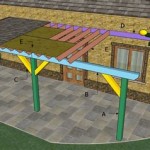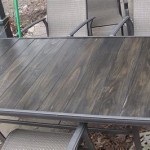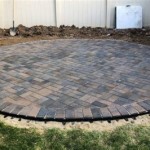Covering Concrete Patios: Essential Considerations for Long-Lasting Outdoor Oasis
Concrete patios are a popular choice for outdoor living spaces due to their durability and affordability. However, exposed concrete can be susceptible to cracking, staining, and fading over time. Covering your concrete patio can help protect it from the elements and enhance its aesthetic appeal.
Types of Patio Covers
There are several options available for covering concrete patios, each with its own advantages and disadvantages. Consider factors such as style, budget, and functionality when selecting a cover.
- Canopies: Fabric canopies provide shade and protection from rain. They are relatively affordable and easy to install.
- Pergolas: Pergolas are open-lattice structures that provide shade and allow for ventilation. They can be customized with climbing plants or curtains.
- Arbors: Arbors are similar to pergolas but smaller and typically freestanding. They provide shade and can be used to create a focal point.
- Gazebos: Gazebos are enclosed structures with a roof and walls, providing complete protection from the elements. They are often more expensive than other options.
- Awnings: Awnings are retractable fabric covers that can be extended or retracted as needed. They provide shade and protection from rain while allowing for flexibility.
Roofing Materials
The roofing material for your patio cover will depend on the desired look and budget. Options include:
- Fabric: Fabric is a lightweight and affordable option. It provides shade but is not waterproof.
- Metal: Metal roofing is durable and waterproof. It is available in various finishes and can be painted to match the exterior of your home.
- Polycarbonate: Polycarbonate is a clear or translucent material that allows for natural light while providing UV protection.
- Shingles: Shingles are a traditional roofing material that provides durability and protection from the elements.
- Tile: Tile roofing is a premium option that offers durability, water resistance, and a variety of styles.
Planning and Installation
Planning and installing a patio cover requires careful consideration. Factors to consider include:
- Size and placement: Determine the size and location of the cover to provide adequate shade and coverage.
- Foundation: The cover must be supported by a sturdy foundation to ensure stability.
- Drainage: Ensure proper drainage to prevent water accumulation on the patio or cover.
- Building codes: Check local building codes for any requirements or restrictions on patio covers.
- Professional installation: Consider hiring a qualified contractor to ensure proper installation and safety.
Maintenance and Care
Regular maintenance will help extend the life of your patio cover. Maintenance may include:
- Cleaning: Clean the cover regularly to remove dirt and debris.
- Inspections: Inspect the cover periodically for any damage or loose parts.
- Repairs: Address any damage promptly to prevent further deterioration.
- Seasonal preparation: Prepare the cover for winter by removing snowfall or debris.
Conclusion
Covering your concrete patio is an investment that can enhance its functionality, aesthetic appeal, and longevity. By carefully considering your options and prioritizing quality materials and installation, you can create an outdoor oasis that will provide years of enjoyment.

Diy Deck Over A Concrete Patio And Tips For Staining Your The Easy Way Love Color Design

Diy Turning A Concrete Slab Into Covered Deck Catz In The Kitchen

Covering Concrete Slab Installation Dektektile Luxury Tile Decking Material

Stone Over Concrete Porch Welcome Home Quiu Com

Katy Patio Cover With Stamped Concrete Tradition Outdoor Living

Easy Concrete Patio Coverup Ideas The Garden Glove

Diy Turning A Cement Porch Into Wood Deck Catz In The Kitchen

Deck And Cover View Along The Way

Stamped Concrete Archives Page 2 Of 4 Tradition Outdoor Living

10 Inexpensive Ways To Cover A Concrete Patio Balcony Boss








